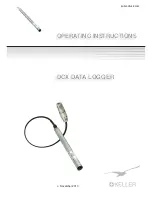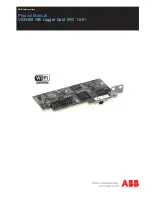
Modem
transmission
© Diebold Election Systems, Inc. 2002 AccuVote-OS Hardware Guide
32
8. Modem
transmission
Election results may be transmitted to the host computer by modem.
8.1. Programming a memory card
The AccuVote-OS first signals to the host computer that it is ready to receive information. Once
ports have been readied in the AccuVote-OS Server 1 console in GEMS, ballot and vote center
information is programmed to memory cards at the remote site.
Commonly, memory cards are programmed directly, although memory card programming by
modem is useful if memory card difficulties arise on Election Day.
8.2. Transmitting Election Results
The AccuVote-OS signals to the host computer that it is ready to transmit information. Once
ports have been readied in the AccuVote-OS Server 1 console in GEMS, election results may be
transmitted to the host computer.
Both AccuVote-OS units and host computer are equipped with modems which allow the
AccuVote-OS to send and receive information over a telephone line.
Appendix F: Modem transmission checklist
provides a suggested log for tracking polling place
telephone numbers, line information, special codes required as well as site information relating to
election results transmission.
8.3. Supplies
The following supplies are required for modem transmission:
•
One modem for each telephone line
•
Power transformer and cable used to power each host computer modem
•
port expansion card, providing multiple port transmission capability
•
Internal AccuVote-OS pocket modems, one supplied with each AccuVote-OS
•
RJ-11 telephone cord for every AccuVote-OS
•
RJ-11 telephone cord connecting every election central phone line to a modem
•
Serial cables connecting the host computer to modems
•
Dummy plugs for the Phone jack of each AccuVote-OS.
8.4. AccuVote-OS
Modems
Each AccuVote-OS is supplied with a pocket modem, which allows the unit to communicate with
the host computer over telephone lines—this modem is displayed in Figure 9-1.
These modems are:
•
Pocket-sized, transmit data at a rate of 2400 baud and weigh approximately 4 oz. each
•
Set to transmit data with
no parity
, meaning that they are capable of transmitting the full
8-bit ISO extended character set, without the last bit of each character representation
being used for parity checking
















































